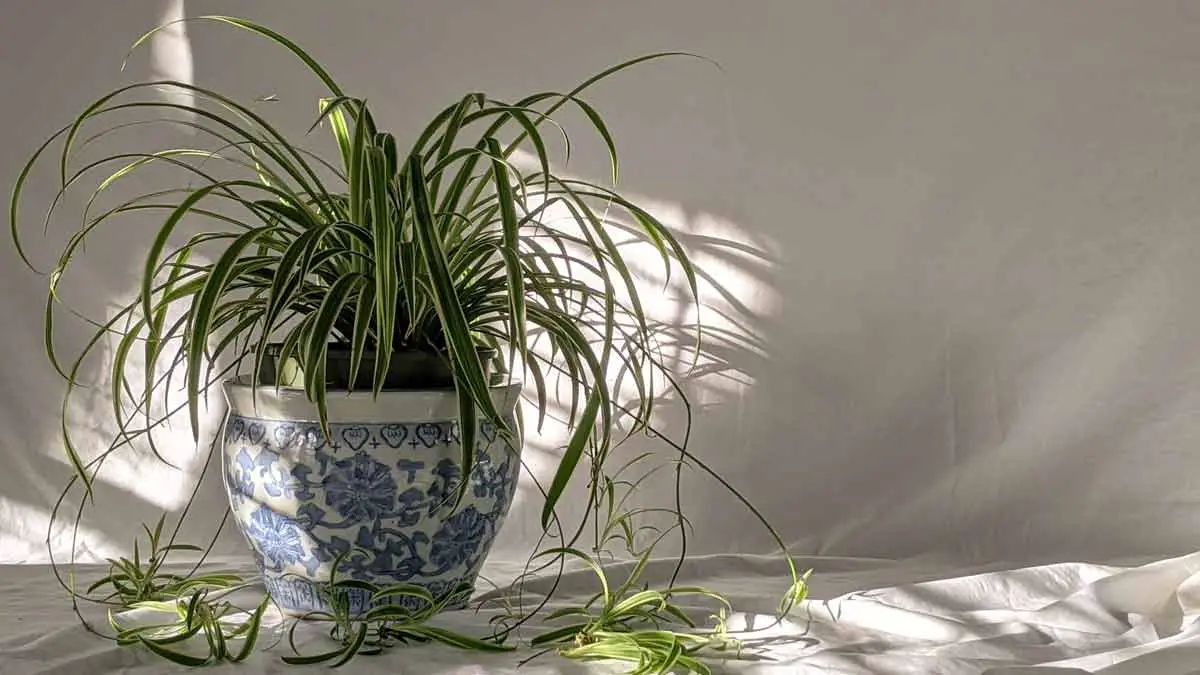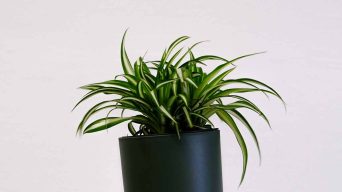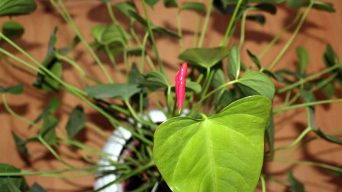Spider plants are known for being one of the easiest houseplants to care for.
However, even the most low-maintenance plant can run into problems from time to time.
One common issue that spider plants face is legginess.
Leggy spider plants are often the result of too little light. If your spider plant is not getting enough light, it will start to stretch out and become leggy in an attempt to reach for more light.
The good news is that leggy spider plants are relatively easy to fix.
This article will teach you everything you need to know about fixing a leggy spider plant.
What Causes a Spider Plant to Become Leggy?
There are a few reasons why your spider plant might be getting leggy.
One reason could be that it’s not receiving enough light. Spider plants need bright, indirect sunlight to grow healthy and full.
If your plant is placed in a spot that’s too shady, it will become leggy as it stretches out to find more light.
Spider plants need at least four hours of bright, indirect sunlight each day.
Another reason your spider plant might be leggy is due to overfertilization.
When you overfertilize your plant, the leaves will grow larger than usual. This causes the plant to become lean and weak.
High nitrogen fertilizers are especially likely to cause this problem.
Nitrogen is an essential nutrient for plants, but too much of it will cause the plant to grow too fast. This makes the plant leggy and weak.
How To Tell If Your Spider Plant Is Leggy?
There are a few signs that you can look for to determine whether your spider plant is leggy.
The most common signs are:
The Plant Is Stretching Out
If your spider plant is stretching out and becoming taller, it’s likely leggy. This is usually due to the plant not receiving enough light.
The lack of light causes the plant to become “etiolated,” which means it becomes stretched out and thin.
Leaves Are Sparse
Another sign of a leggy spider plant is sparse leaves. When the plant stretches out, it produces fewer leaves.
This is because the plant focuses its energy on growing taller instead of producing more leaves.
The Leaves Are Thin and Limp
Leggy spider plants often have thin, limp leaves. This is due to the plant not receiving enough nutrients.
When a plant is etiolated, it doesn’t receive enough light for photosynthesis. This means the plant can’t produce its food and must rely on the food it stores in its leaves.
Over time, this will cause the leaves to become thin and limp.
The Plant is Drooping and Falling Over
When your spider plant begins to exhibit a drooping or falling-over appearance, these are classic indicators of legginess.
A leggy plant tends to become top-heavy as it extends upwards, often leading to an inability to support its own weight.
Consequently, the plant starts wilting and drooping and, in more severe cases, may topple over entirely. The primary issue lies in its compromised structural integrity, stemming from inadequate support and insufficient root development.
Pale Green Coloration
If you observe your spider plant taking on a pale green hue, it is likely experiencing a condition known as etiolation.
This change in color results from a deficiency in chlorophyll, the pigment responsible for a plant’s vibrant green coloration and its pivotal role in facilitating photosynthesis.
The paleness is a visible indicator that the plant is not receiving enough light.
There Is Little to No New Growth
If your spider plant is not producing new leaves or flowers, it’s likely leggy.
When a plant is etiolated, it doesn’t have the energy to produce new growth. This means you’ll see little to no new leaves or flowers on your plant.
How To Fix a Leggy Spider Plant
Now that you know how to tell if your spider plant is leggy, it’s time to learn how to fix it.
You can do a few things to help your plant become healthier and fuller.
Prune the Spider Plant
One way to fix a leggy spider plant is to prune it. This will help the plant to become fuller and more compact.
You must cut off the yellow or pale green leaves to prune your spider plant. These are the leaves that are not receiving enough light.
You also need to cut off any brown or dead leaves. These leaves are not contributing to the plant’s growth and should be removed.
The foliage must be cut at the base of the plant. Do not cut off more than one-third of the plant at a time.
If you remove too much of the plant, it will become stressed and might be unable to recover.
Pruning your spider plant will help it to become fuller and more compact. It will also encourage new growth.
Give the Spider Plant More Light
If your spider plant is leggy, it’s likely not receiving enough light.
To fix this, you need to give your plant more light.
Spider plants need at least six hours of indirect sunlight each day. If possible, give your plant more light than this.
You can place your plant in an east- or west-facing window. This will give your plant the indirect sunlight it needs without exposing it to too much direct sunlight.
When grown outdoors, spider plants need partial shade. They should be placed in an area where they will receive indirect sunlight for most of the day.
If you can’t give your plant more light, you can try using grow lights. Grow lights are artificial lights that mimic sunlight.
They’re a great way to give your plant the light it needs to grow.
Stop Fertilizing the Spider Plant
If your spider plant is leggy, you might be fertilizing it too much.
Spider plants don’t need a lot of fertilizer. Too much fertilizer can cause the plant to become leggy.
If you’re fertilizing your spider plant, stop doing it until the plant has recovered.
You can flush the soil to remove any excess fertilizer. To do this, water the plant thoroughly and allow the water to drain out of the pot.
Do this once a month for three months. This will help to remove any excess fertilizer from the soil.
Once the plant is healthy, you can start fertilizing it once every month during the growing season.
Use a balanced fertilizer that is low in nitrogen. Nitrogen is the nutrient that causes plants to become leggy.
If you can’t find a fertilizer low in nitrogen, you can dilute regular fertilizer by half. This will help to prevent the plant from becoming leggy.
How To Prevent a Leggy Spider Plant
The best way to fix a leggy spider plant is to prevent it from happening in the first place.
You can do a few things to prevent your plant from becoming leggy.
Give the Spider Plant Enough Light
One of the most important things you can do to prevent your spider plant from becoming leggy is to give it enough light.
Spider plants need at least six hours of bright indirect light daily.
An east- or west-facing window is a great place to put your spider plant. This will give your plant the bright indirect light it needs.
Outdoor spider plants need partial shade. They should be placed in an area where they will receive indirect sunlight for most of the day.
Turn the Spider Plant Regularly
Another way to prevent your spider plant from becoming leggy is to turn it regularly.
Spider plants grow towards the light. If you don’t turn the plant, it will start to lean towards the light source.
To prevent this, turn the plant every week or so. This will help the plant to grow evenly.
Trim the Plant Back Regularly
One of the best ways to prevent your spider plant from becoming leggy is to trim it back regularly.
Trimming the plant back will help it to become fuller and more compact. It will also encourage new growth.
Cut off any yellow, brown, or dead leaves to trim the plant. These leaves are not contributing to the plant’s growth.
You can also trim off any leggy stems. Leggy stems are long and thin. They are not as strong as the rest of the plant.
Trimming these stems will help the plant to become fuller and more compact.
Fertilize the Spider Plant Properly
Another way to prevent your spider plant from becoming leggy is to fertilize it properly.
Spider plants don’t need a lot of fertilizer. Too much fertilizer can cause the plant to become leggy.
Fertilize your spider plant once a month during the growing season. Use a balanced fertilizer that is low in nitrogen.
Final Thoughts
Spider plant care is pretty easy once you get the hang of it.
These plants are very resilient and can be forgiving if you make a mistake or two.
Just remember to water them regularly, keep them in a bright spot, and fertilize them every few weeks, and your spider plant will thrive.
If you notice that your spider plant is looking a bit leggy, don’t worry. This is a common problem, and there are a few easy fixes.
You can bring it back to its former glory with a bit of love and attention. By following the tips in this article, your spider plant will look healthy and lush in no time.







